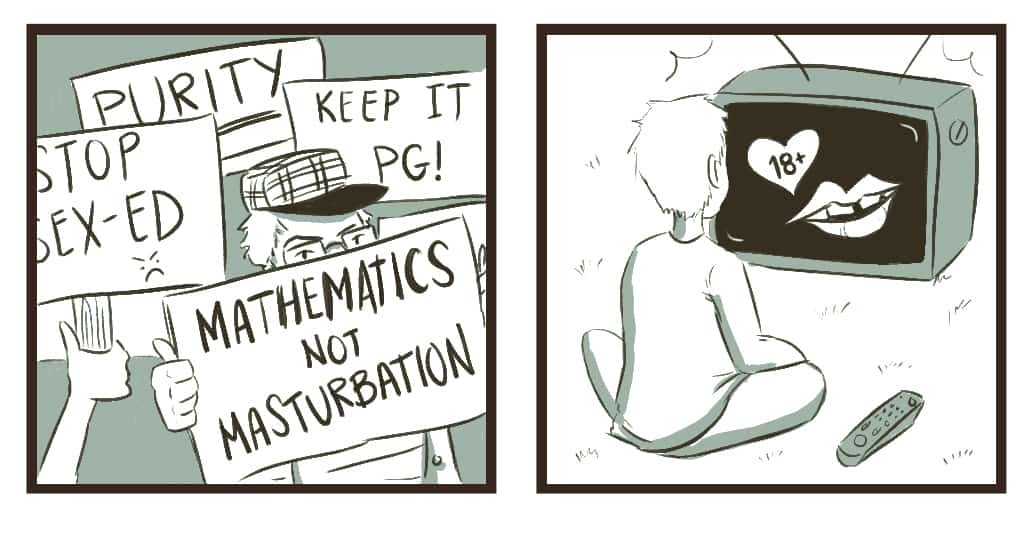Ontario’s new sexual education curriculum will be phased into classrooms this September, and many parents believe that it’s too much, too soon. While some seem content with keeping their kids in the dark until “the time is right,” this curriculum is in fact a necessary tool for tackling problems like unsafe sex, rape culture, and transphobia, by starting at the root of social development — education.
Contrary to the beliefs of many agitated parents, the new Ontario curriculum won’t be some sort of demonstrative sex workshop — the changes are meant to inform, rather than instruct. While some argue that the mere discussion of sex will encourage their children to participate in sexual activities, a 2005 study by Family Health International found that “the evidence is strong that [sexual education] delay or decrease sexual behaviours or increase condom or contraceptive use” in developed countries.
In any case, sexual activity is almost inevitable for most students. According to the 2009/2010 Canadian Community Health Survey, 30 per cent of teens aged 15-17, and 68 per cent of teens aged 18-19, had been sexually active. Surprise: some teenagers have sex.
As such, the priority of the new curriculum is to prepare them for when that time comes, rather then leaving students to be misguided by self-education via porn sites.
Think back to your frosh week, and to your first year at U of T: did you know what was happening, while it was happening? Due to the conservative nature of the sex education available to many of us growing up in Ontario, some of us missed out on a fundamental part of our social development — add in the freedom from parental guidance and peer pressures that come with university life, and you have a recipe for disaster.
It is important to note that the new curriculum isn’t simply about safer sex practices. For instance, the curriculum emphasizes consent, which was noticeably absent from my gender-segregated sexual education in elementary school in Ontario. Instead, girls were taught to “be safe” in the way that we dressed.
Considering that my entire sexual education experience was laced with examples of rape culture, I shouldn’t really be surprised that university campuses have been making headlines all year for sexual violence, whether for misogynistic and sexually violent online abuse or physical sexual assault. The lack of consent education in elementary and high schools translates into such problems later in life.
What’s more, I was always taught that gender was binary — you were either a girl, or a boy. Suffice to say, such cisgenderism is extremely alienating for non-binary folk. Consider, for example, the initial backlash to Trinity College’s amendment to create a gender-neutral constitution.
Fortunately, the new sex-ed curriculum presents students with various fluid gender identities in grade six. This type of education will help create awareness and respect for various identities, tackling the problem of transphobic discrimination before it manifests as social stigma, or as devastatingly high suicide rates.
Surely, the thousands of parents who have pulled their children out of school in defiance of this new curriculum want the best for their kids. These parents, however, are simply ignoring the facts that the new sex education curriculum will work to foster an inclusive environment where students, regardless of sexual orientation or gender identity, will feel welcome.
Nish Chankar is a second–year student at Trinity College.


